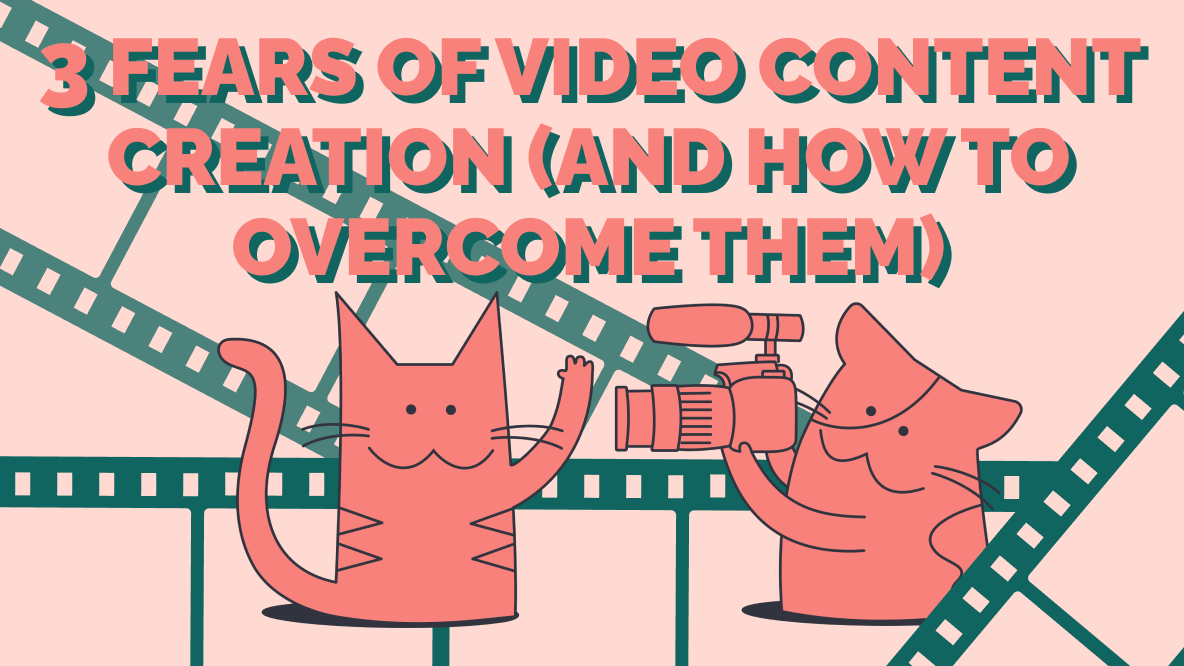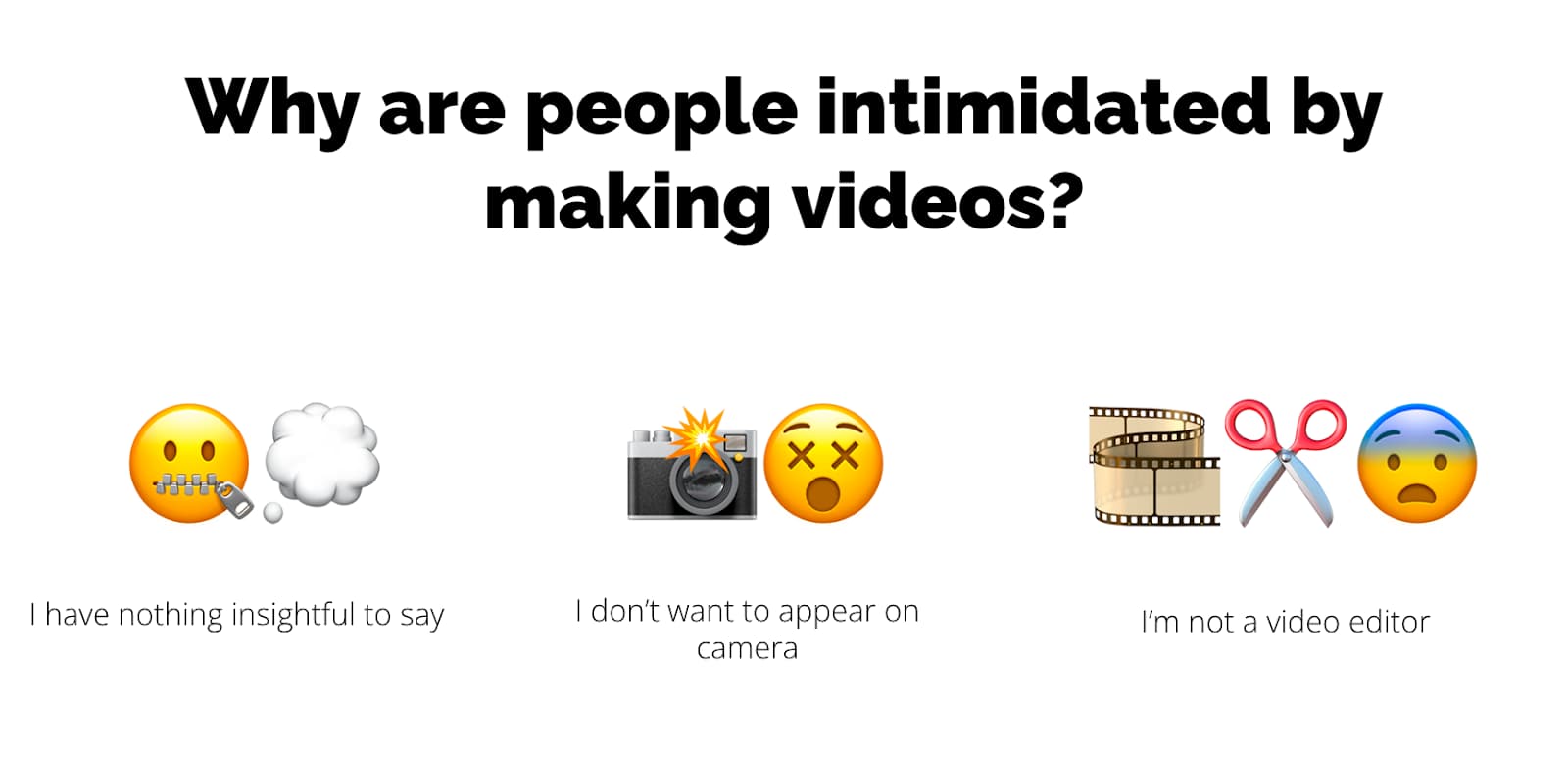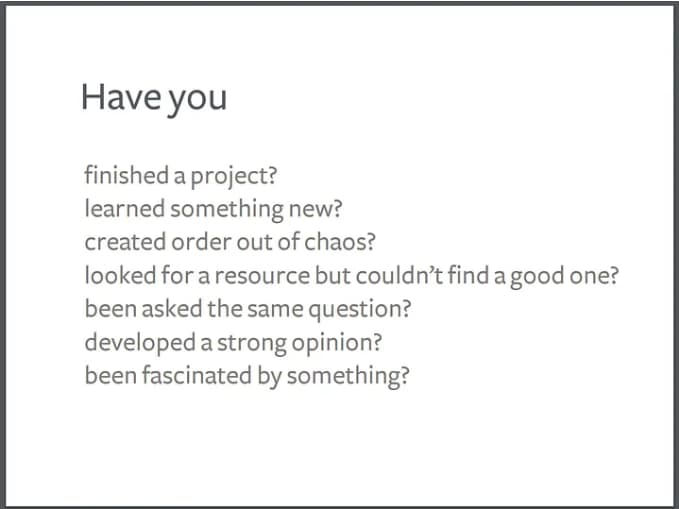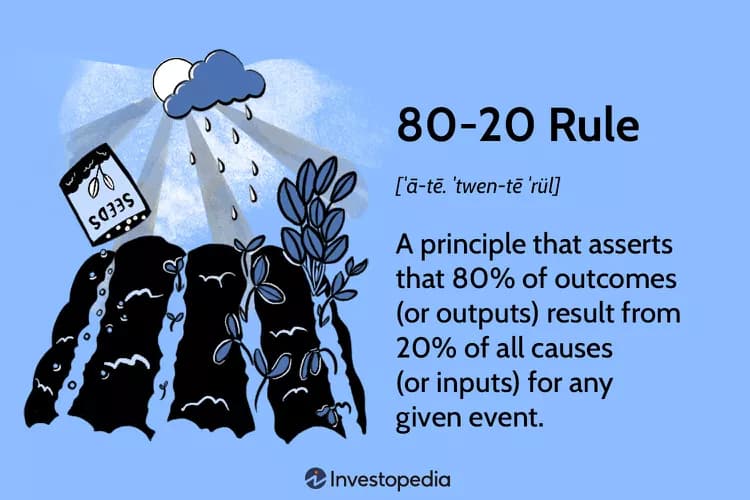The 3 Fears that Stop Marketers from Creating Video
We know that video is a crucial medium for brands right now, so why aren't more marketers making video? We address the three most common fears stopping marketers today from making video, plus provide tips for how to surmount them.

Video is the modern marketing medium. Most social media platforms are prioritizing it, SEO platforms are ranking video results more highly, users prefer to watch videos over other forms of content. We've talked about video-first content strategies and how to maximize your video content with repurposing here on our channels, too.
Yet, despite knowing that video is still on the rise, 43% of companies still say they don't have a dedicated video strategy.
To get a better understanding of why that is, we asked marketing professionals what’s stopping them from creating more video?
While the typical "business reasons" often came up, like budget or resourcing, it was just as common to hear about a marketer's personal fears or reservations when explaining why they don't invest more in video. In fact, the biggest fears we found were:
- "I have nothing insightful to say."
- "I don't want to appear on camera."
- "I'm not a video editor."

In this article, we're going to address where these reservations come from and what marketers can do to get more comfortable with creating video.
Fear #1: I have nothing insightful to say in a video.
There is a lot of content out there. Because of that, as marketers, there is sometimes the worry that you’re adding to the noise instead of saying something insightful or new.
This worry rears its head in a big way when marketers are creating thought leadership content. But the fear is acute with video for any content format because being on screen and saying nothing of substance feels like being on stage and forgetting your lines. There's just something about being on camera and lacking good talking points that feels especially embarrassing.
Tips for coming up with video content ideas
The first step to feeling confident enough in your message to share it on video is to realize that this blocker is really a mental one.
Yes, there are tactical things you can do to help (which we'll cover), but that won't matter until you internalize this idea that your personal experiences, points of view, and vantage points on certain problems all combine to create opinions that other people want to hear.
It's not about having a single, novel idea. It's about taking good ideas and adding your personal experiences to them.
One way to address this is to think about "prompts" instead of ideas.
Prompts are moments in time that you naturally encounter in your work that might make for helpful content for other people. Diana Smith, a product marketing leader at HashiCorp, shared a short list of prompts that we really liked. They’re quick questions to ask yourself and your team to help spark great content ideas.

You can sit down and ask yourself these questions in a brainstorming session, but it’s also helpful to make mental notes whenever you encounter these moments in your daily work. You can even keep a digital (or physical!) notebook to log your ideas.
To help your ideas feel sharp and snappy for video, we recommend rewriting them as a script. Modern video creation software like Kapwing includes AI-powered scriptwriting tools, which can be helpful when you have a brain dump document full of ideas but need help turning them into something usable. AI can take your concepts and generate a script that feels more natural as spoken dialogue.
More quick tips for scriptwriting:
- Read it out loud. Does it sound natural? Try changing it to sound more like how you’d talk to a friend or colleague.
- Try an outline, instead of a full script. The more comfortable you get on camera, the less scripting you’ll need. Make sure you have your main points down, but if you know the topic well, you’ll be able to speak confidently on it.
- Tie it back to your POV. What do you (or your company) believe about your topic/industry? Your video will feel more engaging and authentic if you provide evidence supporting that point of view.
Fear #2: I don't want to appear on camera.
Let's not beat around the bush: Many people feel anxious about their appearance on camera, and that issue crops up in video marketing, too.
Add to that, lots of content marketers come from an editorial background and grow a comfort or at least a preference for staying off camera where their on-screen appearance, speaking patterns, or recording space don't play a role in the content—just their ideas do. That can be a hard pattern to change.
Tips for getting more comfortable in front of a camera
While it’s definitely nerve-racking, there are a few things to keep in mind that should help.
1. If it’s not live, you’re in complete control.
Say things as many times as you need, say it in different ways, reshoot it if you have to! The stakes are not as high as they feel.
2. Fix it in post.
There’s a lot you can do with the magic of video editing – add overlays, title cards, b-roll, and more to cover up any weird jump cuts where you may have had to cut three different takes together to get it right.
Our video expert here at Kapwing, Jack Dodge, uses jump cuts all the time to make polished, professional videos for all our channels. “In most videos, I go sentence by sentence,” he says, “looking at the camera and speaking into the camera, and then I look down and study the next line. Jump cuts are ok and expected.”
3. Practice makes perfect.
Being on camera is like building muscle. No matter how painful it might seem at first, the more you exercise that muscle, the easier it gets over time.
4. Follow the 80/20 rule.
The Pareto Principle says that 20% of your effort results in 80% of the outcome. That’s certainly true for video. There’s a small set of things you can do that make the most difference.

Let’s unpack that a bit.
A quick getting started guide for looking good on camera
There’s no need to obsess over expensive gear or hyper-optimizing your setup when you’re just getting started. If you get the following things right, you’ll look more polished than 90% of marketing videos:
1. Audio quality.
According to Jack, good audio is more important than video quality. “If you sound good, I think you fool people into thinking the quality of the video is better, too, and it affirms that what you’re saying is important because the sound is clear and people want to listen to you.”
You don’t need the most expensive mic to achieve good audio quality. There are a few different tiers of microphone we’d recommend:
- Lapel mics. You can grab one of these online starting around $15.
- USB mics. Something like a Yeti will run you around $100 - $130.
- XLR mics. These can range wildly in price, but a nice one from Shure is around $400.
Post processing can also help increase audio quality. Kapwing has a Clean Audio tool just for this purpose. There are also others, like Adobe’s Audio Enhancer and Reaper’s ReaFIR plugin. Explore editing tricks like these to polish up your videos’ sound.
2. Video quality.
You already have an amazing camera, probably sitting on your desk or in your pocket right now (or maybe you’re reading this article on it). Yes, your phone.
Smartphone cameras have great resolution and capture high quality video. With tools like the Continuity Camera mount from Apple or even just a regular tripod, you can connect your phone to your computer to both stream and record video. This is especially true for short-form video. These platforms were built with the expectation that you'd be taking and posting video with your phone.
Most importantly? Don’t use the built-in Macbook webcam. Just… don’t.
3. Lighting.
Indirect, natural light is best for video recording. We recommend choosing a room with several windows for your recording set up. But if natural light is in short supply, which is often true during winter, you can substitute with other lighting.
A ring light is good to have on hand for this sort of thing. You can buy one online at almost any price point, starting from very budget-friendly to more expensive, which are typically more powerful and have more settings. It’s a worthwhile investment, as you’ll use this over and over.
4. Basic editing.
You don’t have to take night classes and get a secondary degree in motion graphics or animation, but spending time learning some video editing basics will improve your videos’ quality by leaps and bounds.
In particular, we recommend learning how to add title cards for scene changes, add jump cuts to cover any flubbed takes, and add some dynamic visuals with zoom cuts to punch in and out with timing.
Fear #3 "I'm not a video editor/producer."
Scroll through any social platform and you're sure to see at least a few highly-polished and meticulously edited videos—the kind of videos that make post-production seem impossible for the average person. The editors behind these videos are certainly impressive, but is that level of wow factor production needed for marketing?
And does that sky-high production quality really correlate 1:1 with a video's impact?
We’re not convinced it does.
Don’t let the fear of not creating the best, most high-production value video stop you from creating anything at all.
Tips for getting started editing videos
In marketing, it’s more important that the video production is good and the content itself is great. You make great content by tackling a tough problem or valuable idea, packing it with insights so that busy viewers can get value from it right away. Not by adding motion graphics or cool transitions (although we like those!).
Most edits, outside of making your content snappier or more accessible, are superfluous.
The most basic edits are still the ones that hold up the best: jump cuts, moving zooms or the Ken Burns effect, adding text or overlays, and adding music can completely change the pace of videos. And the best part is, these are all tools you can learn in no time, especially as video editing software gets more intuitive and user-friendly.
Rough cuts have gotten so much easier, thanks to text-based video editing. Our own marketing team uses this feature all the time. When you can draw a line around the content you want from your footage without ever having to touch the timeline editor, it makes the process 10x faster and smoother.
At the end of the day, your videos don’t need to be super polished.
There are some basic edits that are important and we’ve built Kapwing to make applying those pieces automatic and intuitive. But really, the video is about the story or the script. If you’re sharing an authentic experience and real insights, that comes through and makes for engaging video. And if you use the tips from the first two sections of this article, your final video shouldn’t need too much editing anyway.
We believe marketers should feel empowered to lean into video creation right now. Even though all these fears are valid, they’re not insurmountable. And the payoff is really great.
☝ Catch this episode of the our podcast to hear our Video Content Strategist, Jack Dodge, and our Head of Product, Lauren Khoo, dive into this topic even further and share their own tips and advice for getting started with video.









